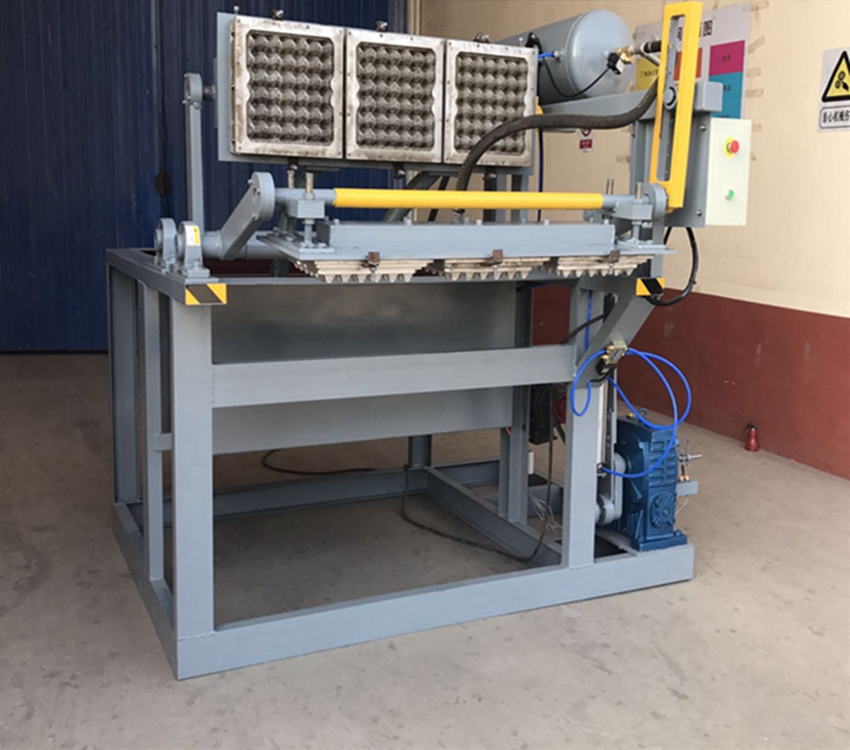Innovative Rotary Egg Tray Machine for Efficient Production and Sustainable Packaging Solutions
Aug . 13, 2024 10:58 Back to list
Innovative Rotary Egg Tray Machine for Efficient Production and Sustainable Packaging Solutions
The Rotary Egg Tray Machine Revolutionizing Egg Tray Production
In the modern age of automated manufacturing, the demand for efficient and sustainable production methods has led to significant innovations in machinery. One such innovation is the rotary egg tray machine, a highly efficient device that significantly streamlines the process of producing egg trays from recycled paper pulp. This machine has become essential in the egg packaging industry, owing to several key advantages that enhance productivity, reduce costs, and promote environmental responsibility.
Functionality and Design
The rotary egg tray machine operates by utilizing a continuous production line, which integrates the processes of pulp making, shaping, drying, and packaging. At its core, the machine uses recycled paper products, such as newspapers and cardboard, which are pulped and molded into trays. The design features a rotating mold that allows for high-speed production, often capable of creating thousands of trays per hour. This efficiency not only meets the high demand for egg trays but also minimizes labor costs, enabling businesses to operate more profitably.
Advantages of Using a Rotary Egg Tray Machine
1. High Production Capacity One of the most significant benefits of rotary egg tray machines is their impressive output. Unlike traditional methods, which can be time-consuming and labor-intensive, these machines allow for continuous production. With the ability to produce regular and customized trays, manufacturers can meet diverse customer needs more effectively.
2. Energy Efficiency Modern rotary egg tray machines are designed with energy-saving technologies, reducing electricity consumption without compromising output quality. This operational efficiency translates into lower production costs and a reduced carbon footprint, aligning with global sustainability goals.
rotary egg tray machine

3. Minimal Waste The use of recycled materials in producing egg trays ensures minimal waste. The paper pulp used in the process is sourced from waste materials, contributing to the recycling industry and reducing landfill burden. Additionally, the waste generated during the egg tray manufacturing process is minimal, making it an environmentally friendly choice for packaging solutions.
4. Durability and Customization Egg trays produced by rotary machines are known for their strength and structural integrity. The designs can be tailored to specific requirements, accommodating various egg sizes and types. This adaptability makes rotary egg tray machines ideal for businesses looking to cater to a wide range of clients, from small farms to large-scale commercial operations.
Market Trends and Future Prospects
With the global egg production market steadily growing, the demand for egg trays is also on the rise. The rotary egg tray machine presents a viable solution for companies looking to scale up their production capabilities while adhering to sustainable practices. Furthermore, as consumers increasingly seek eco-friendly packaging options, the egg tray production from recycled pulp stands out as an attractive choice.
In recent years, advancements in technology have further enhanced the functionality of rotary egg tray machines. Innovations such as automated stackers, dryers, and quality control systems are being integrated, fostering even greater efficiency and reliability in production. These technologies not only improve output but also contribute to enhanced product quality.
Conclusion
The rotary egg tray machine represents a significant leap forward in the manufacturing of egg packaging solutions. By combining efficiency, sustainability, and customization, these machines are poised to meet the future needs of the egg production industry. As businesses continue to prioritize eco-friendly practices and seek to optimize their manufacturing processes, the rotary egg tray machine will undoubtedly play a central role in shaping the dynamics of egg tray production for years to come. Embracing such innovative technologies is not merely a trend; it is a necessary step towards a more sustainable and efficient industrial future.
-
Hot Sale 24 & 18 Door Rabbit Cages - Premium Breeding Solutions
NewsJul.25,2025
-
Automatic Feeding Line System Pan Feeder Nipple Drinker - Anping County Yize Metal Products Co., Ltd.
NewsJul.21,2025
-
Automatic Feeding Line System Pan Feeder Nipple Drinker - Anping County Yize Metal Products Co., Ltd.
NewsJul.21,2025
-
Automatic Feeding Line System - Anping Yize | Precision & Nipple
NewsJul.21,2025
-
Automatic Feeding Line System - Anping Yize | Precision & Nipple
NewsJul.21,2025
-
Automatic Feeding Line System-Anping County Yize Metal Products Co., Ltd.|Efficient Feed Distribution&Customized Animal Farming Solutions
NewsJul.21,2025






